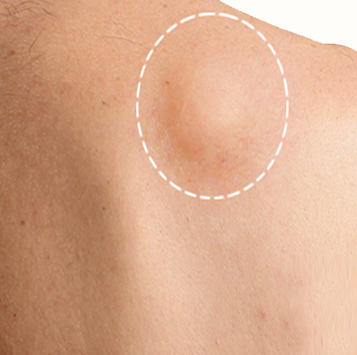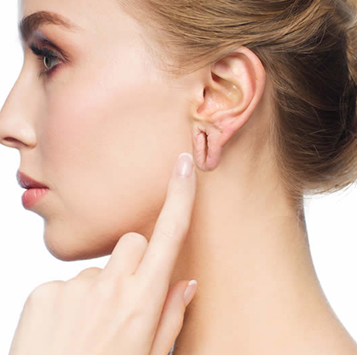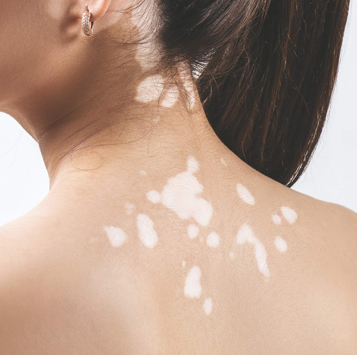Best Dermatosurgery Treatments in Ghatkopar

Cyst / Lipoma Excision
A cyst is a sac-like structure that contains fluid, pus, or other material. Cysts can develop anywhere in the body and can range in size from small to large. They can be benign (non-cancerous) or malignant (cancerous).
A lipoma is a benign tumor made up of fat cells that grows under the skin. Lipomas are usually small and painless, but they can grow large enough to cause discomfort or affect the appearance of the skin.
The excision of cysts and lipomas is usually performed under local anesthesia, which numbs the area to be treated. The surgeon makes an incision over the growth and carefully removes it, along with any surrounding tissue if necessary. The wound is then closed with sutures or adhesive strips, and a dressing is applied.
After the procedure, the patient may experience some pain, swelling, and bruising, which can be managed with pain medication and rest. The surgeon will provide specific post-operative care instructions, including wound care, activity restrictions, and follow-up appointments.
Overall, cyst and lipoma excision is a safe and effective procedure that can provide relief from discomfort, prevent further growth, and improve the appearance of the affected area. However, as with any surgical procedure, there are some risks, such as infection, bleeding, or scarring, which can be minimized by choosing a qualified and experienced surgeon.

Ear Lobe Repair
Ear lobe repair is a surgical procedure that is performed to correct deformities or injuries to the ear lobe. The most common reasons for ear lobe repair include torn or stretched ear lobes, earlobe keloids, or earlobe piercing complications.
The procedure is usually performed under local anesthesia, which numbs the area around the earlobe. The surgeon will then carefully remove any scar tissue, excess skin, or stretched tissue, and reposition the remaining tissue to create a more symmetrical and aesthetically pleasing earlobe.
After the procedure, the patient may experience some mild discomfort, swelling, and bruising, which can be managed with pain medication and rest. The surgeon will provide specific post-operative care instructions, including wound care, activity restrictions, and follow-up appointments.
Most patients can return to their normal activities within a few days after the procedure. However, it is important to avoid any activities that may cause trauma or pressure to the earlobes, such as wearing heavy earrings or sleeping on the side of the head.
Ear lobe repair is a safe and effective procedure that can help restore the appearance and function of the earlobes. However, as with any surgical procedure, there are some risks, such as infection, bleeding, or scarring, which can be minimized by choosing a qualified and experienced surgeon.

Nail Avulsion
Nail avulsion is a medical procedure that involves the removal of a fingernail or toenail from its nail bed. This procedure may be necessary if the nail is severely damaged or infected, or if there is a painful ingrown nail that does not respond to other treatments.
The procedure is usually performed under local anesthesia, which numbs the area around the nail. The surgeon will then carefully lift the nail from the nail bed using a sterile instrument and remove it completely.
After the procedure, the patient may experience some discomfort and swelling, which can be managed with pain medication and rest. The surgeon will provide specific post-operative care instructions, including wound care, activity restrictions, and follow-up appointments.
In most cases, a new nail will grow back within a few months, although it may take up to a year for the nail to fully regrow. During this time, the patient may need to protect the area with a bandage or dressing and avoid activities that may cause trauma or pressure to the nail bed.
Nail avulsion is generally considered a safe and effective procedure when performed by a qualified and experienced medical professional. However, as with any surgical procedure, there are some risks, such as infection, bleeding, or scarring, which can be minimized by following proper wound care and choosing a qualified healthcare provider.

Skin Tag / Warts / Moles Excision
Skin tag, wart, and mole excision are surgical procedures that involve the removal of benign skin growths that may be bothersome, unsightly, or potentially cancerous.
Skin tags are small, benign growths that typically appear in areas where skin rubs against skin, such as the neck, armpits, or groin. Warts are caused by a viral infection and can appear on any part of the body, while moles are pigmented skin lesions that can vary in size and shape.
The procedure is usually performed under local anesthesia, which numbs the area to be treated. The surgeon will then carefully remove the growth using a scalpel, scissors, or a laser, and the wound is then closed with sutures or adhesive strips.
After the procedure, the patient may experience some mild pain, swelling, and redness, which can be managed with pain medication and rest. The surgeon will provide specific post-operative care instructions, including wound care, activity restrictions, and follow-up appointments.
Skin tag, wart, and mole excision is a safe and effective procedure that can provide relief from discomfort, prevent further growth, and reduce the risk of skin cancer. However, as with any surgical procedure, there are some risks, such as infection, bleeding, or scarring, which can be minimized by choosing a qualified and experienced surgeon. In some cases, a biopsy may be performed to ensure that the removed growth is not cancerous.

Molluscum Extraction
Molluscum extraction is a medical procedure that involves the removal of molluscum contagiosum, a common viral skin infection that results in raised, pearl-like bumps on the skin.
The procedure is usually performed under local anesthesia, which numbs the area to be treated. The surgeon will then carefully remove the molluscum bumps using a sterile instrument such as a scalpel or curette.
After the procedure, the patient may experience some mild pain, swelling, and redness, which can be managed with pain medication and rest. The surgeon will provide specific post-operative care instructions, including wound care, activity restrictions, and follow-up appointments.
Molluscum extraction is a safe and effective procedure that can help prevent the spread of the infection and improve the appearance of the affected area. However, as with any surgical procedure, there are some risks, such as infection, bleeding, or scarring, which can be minimized by choosing a qualified and experienced healthcare provider.
It is important to note that molluscum contagiosum is a contagious infection and can spread from person to person through skin-to-skin contact or contact with contaminated objects. Therefore, it is important to take appropriate precautions to prevent the spread of the infection, such as avoiding close contact with infected individuals, washing hands frequently, and keeping the affected area clean and covered.

Corn Excision
Corn excision is a medical procedure that involves the removal of corns, which are small, raised areas of thickened skin that often appear on the feet and toes. Corns are typically caused by repeated pressure or friction on the skin, and can be painful or uncomfortable.
The procedure is usually performed under local anesthesia, which numbs the area to be treated. The surgeon will then carefully remove the corn using a sterile instrument, such as a scalpel or curette.
After the procedure, the patient may experience some mild pain, swelling, and redness, which can be managed with pain medication and rest. The surgeon will provide specific post-operative care instructions, including wound care, activity restrictions, and follow-up appointments.
Corn excision is a safe and effective procedure that can help relieve pain and discomfort associated with corns. However, as with any surgical procedure, there are some risks, such as infection, bleeding, or scarring, which can be minimized by choosing a qualified and experienced healthcare provider.
It is important to note that the underlying cause of corns, such as poor-fitting shoes or abnormal foot anatomy, should also be addressed to prevent the recurrence of corns. The healthcare provider may provide advice on proper footwear, foot care, and other measures to reduce pressure and friction on the feet.

Vitiligo Skin Grafting
Vitiligo skin grafting is a surgical procedure that involves the transfer of healthy skin from one part of the body to an area affected by vitiligo, a skin disorder that causes loss of pigmentation in patches.
The procedure is usually performed under general anesthesia, and the surgeon will begin by harvesting a small amount of healthy skin from a donor site, typically an area that is easily concealed such as the buttocks or thigh. The donor site is then closed with sutures or staples.
The harvested skin is then transplanted onto the affected area of skin, where it is carefully sutured or glued in place. The new skin graft is then carefully monitored for signs of healing and proper integration with the surrounding skin.
After the procedure, the patient may experience some pain, swelling, and redness, which can be managed with pain medication and rest. The surgeon will provide specific post-operative care instructions, including wound care, activity restrictions, and follow-up appointments.
Vitiligo skin grafting is a safe and effective procedure that can help restore pigmentation and improve the appearance of the affected area. However, as with any surgical procedure, there are some risks, such as infection, bleeding, or scarring, which can be minimized by choosing a qualified and experienced healthcare provider.
It is important to note that vitiligo is a chronic condition, and there is no cure for it. While skin grafting can help restore some pigmentation, it may not completely eliminate the patches of depigmented skin, and additional treatments may be necessary to manage the condition. The healthcare provider may also provide advice on lifestyle changes and other measures to help manage the symptoms of vitiligo.





